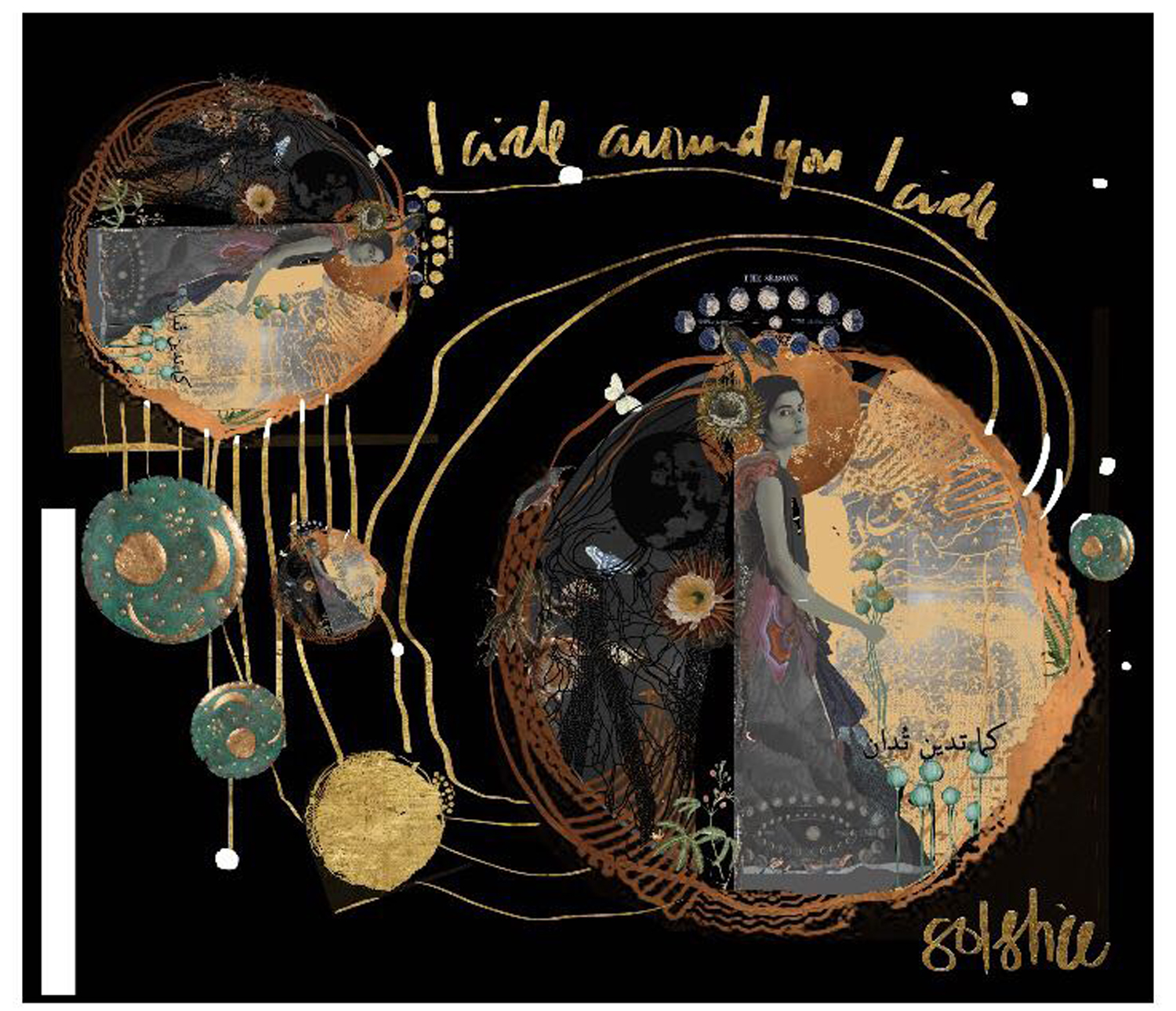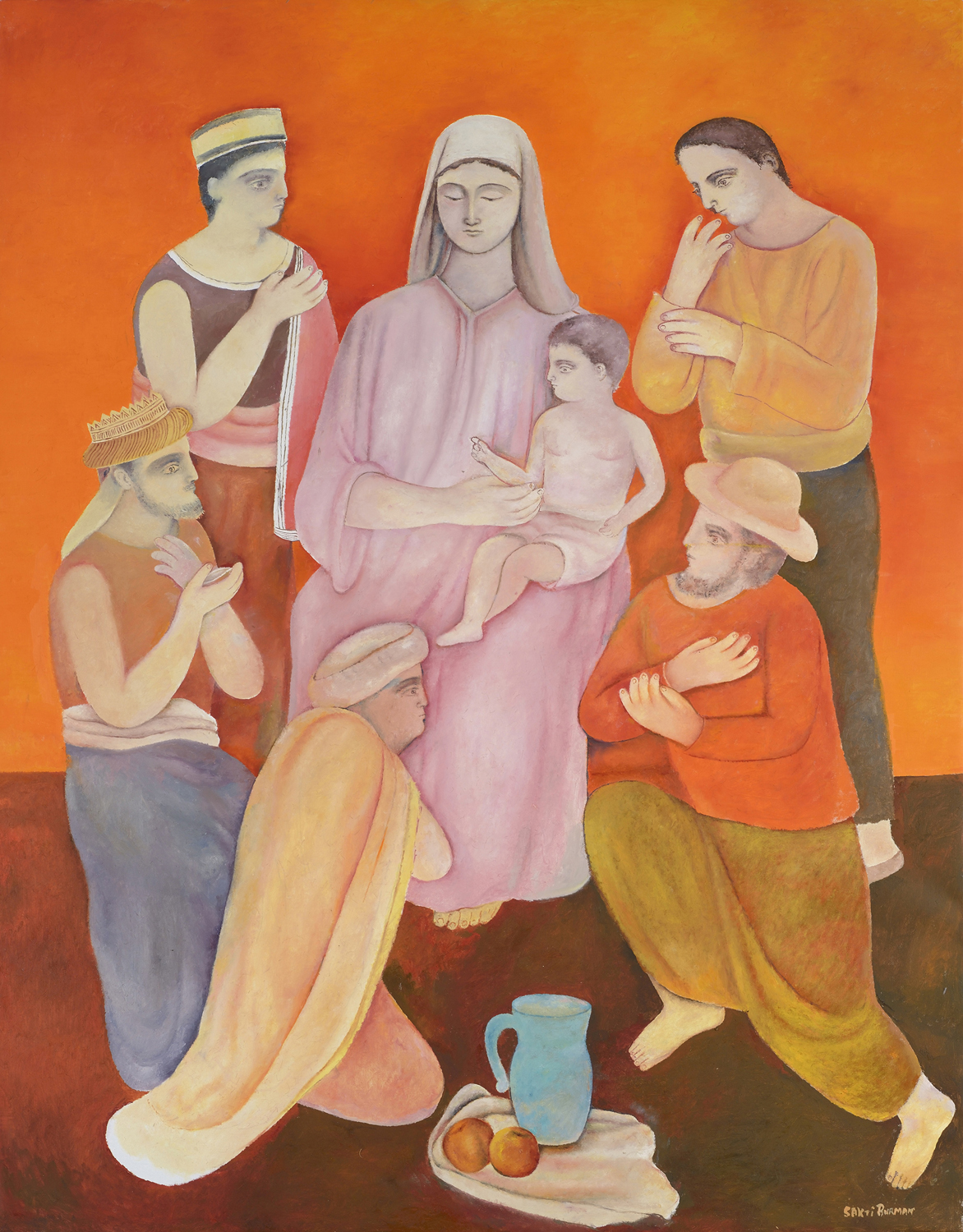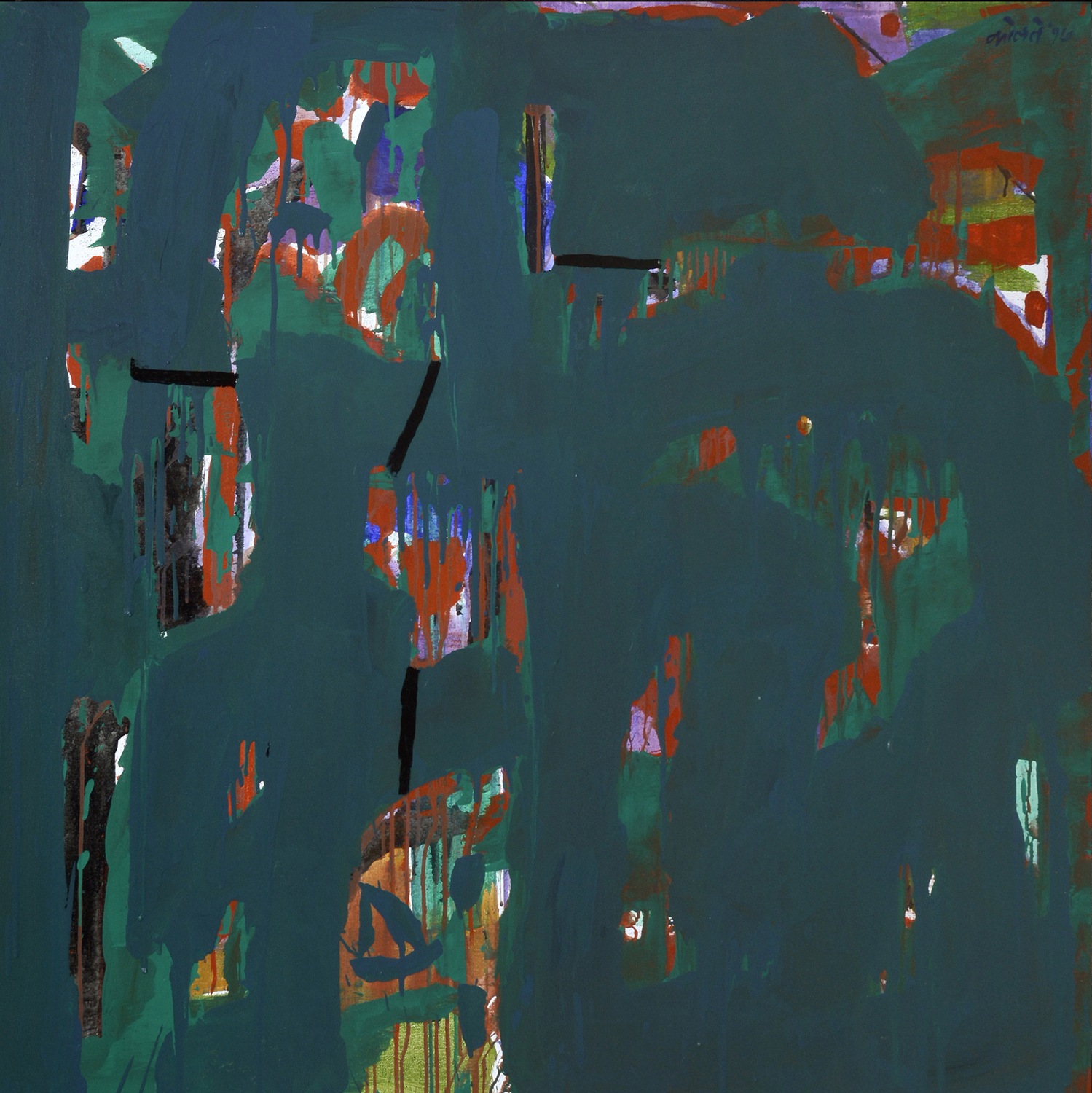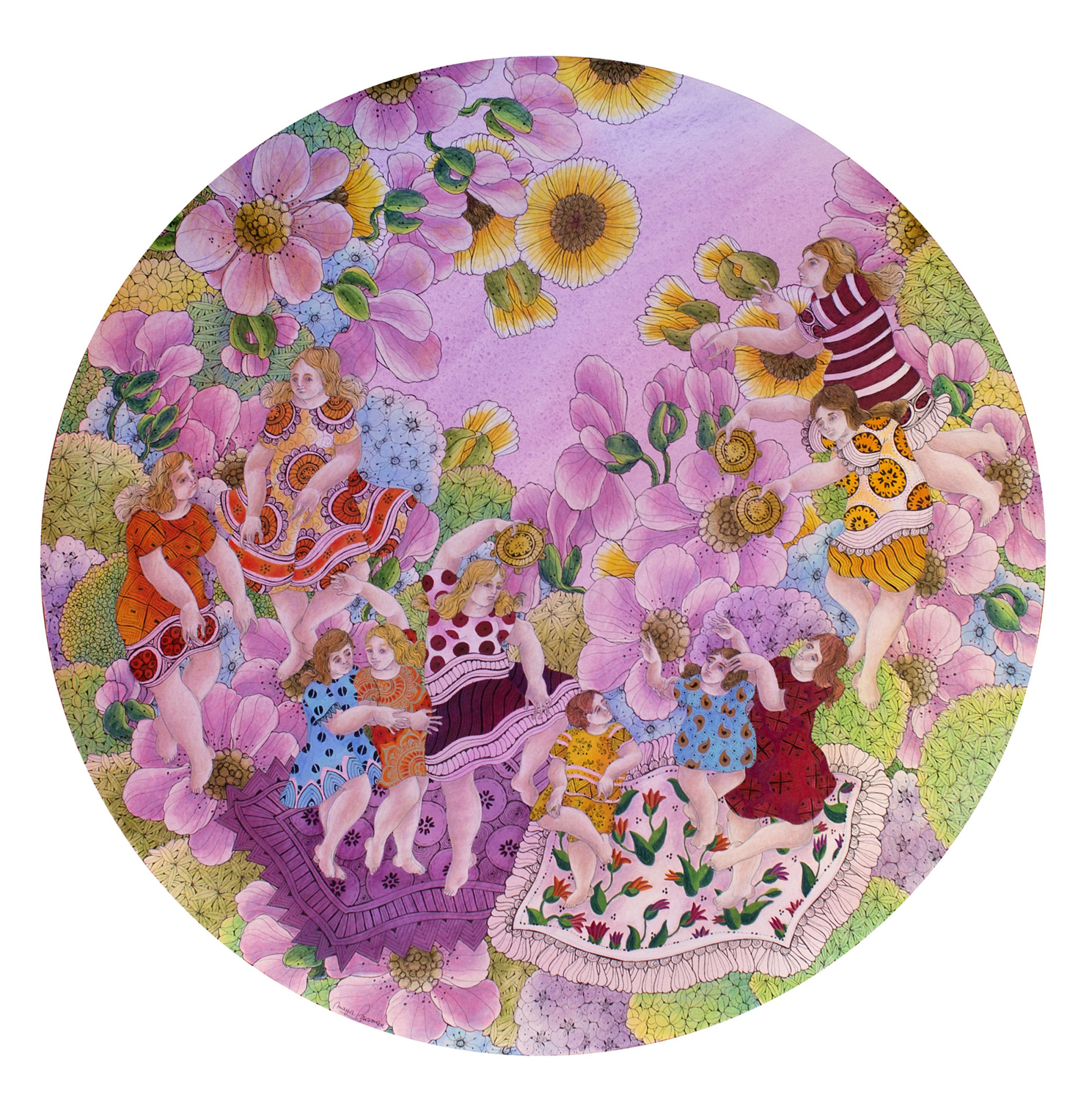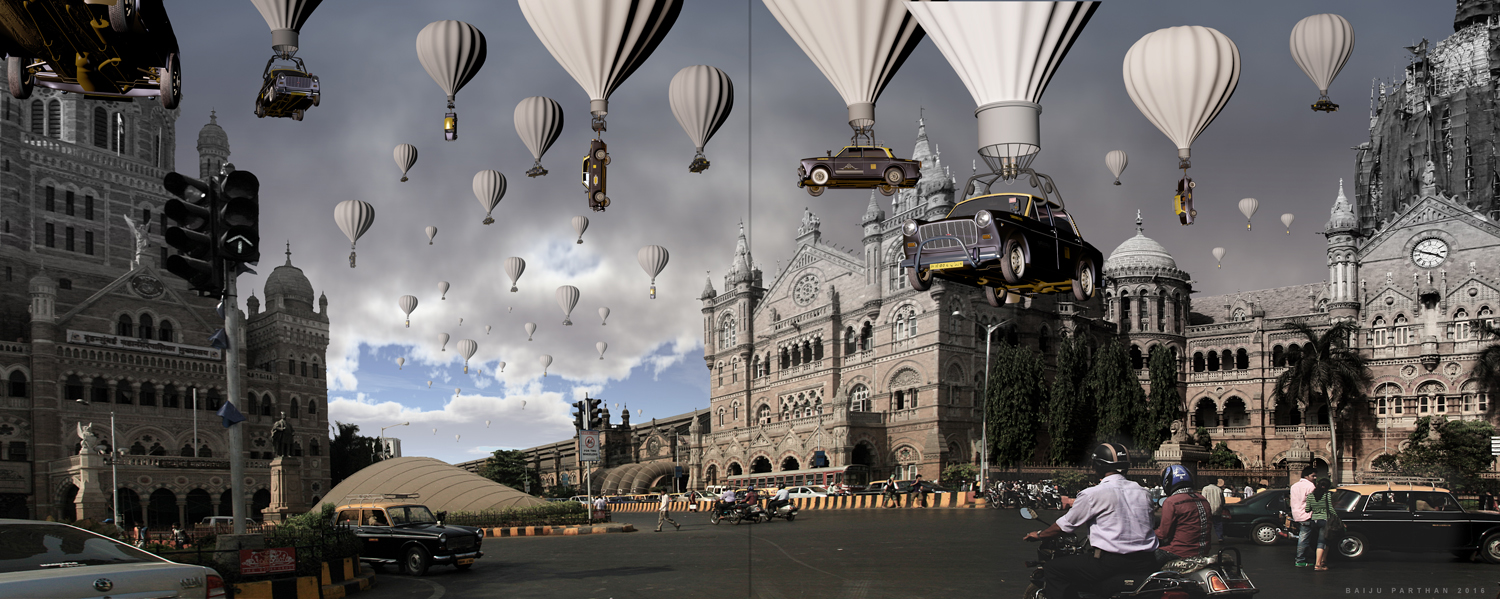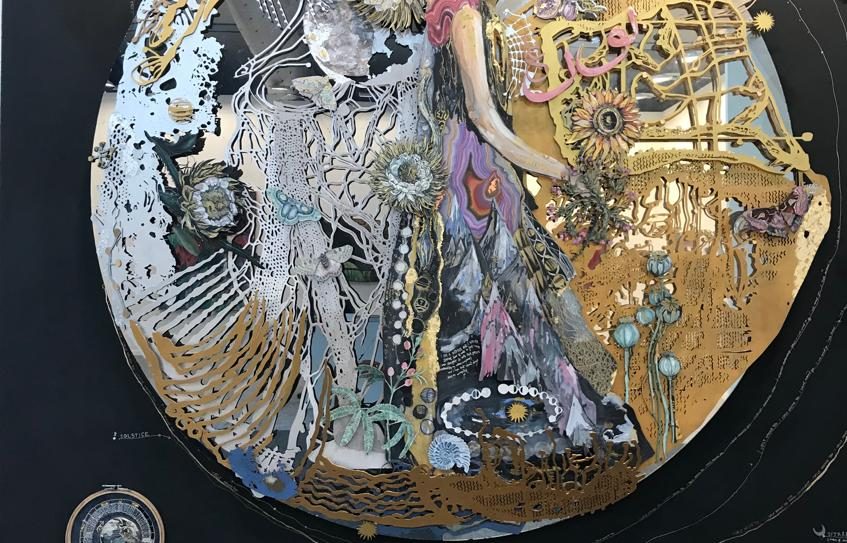Art Musings Booth # B19 features work by Sakti Burman, Satish Gujral, Anjolie Ela Menon, Prabhakar Kolte, Baiju Parthan, Maïté Delteil, Smriti Dixit, Raghava K K, Maya Burman, Nilofer Suleman and Shilo Shiv Suleman.
The paintings by Sakti Burman, He is Dreaming & Nativity, include themes that the artist has visited throughout his artistic journey. Various Indian and European pasts flow into the confluence of his paintings, drawing from Hindu mythology and Biblical narratives, from the puppet theatre, the Mughal miniature ateliers, from Kalighat. Alongside West European art history and Bengali popular culture, he draws on a reservoir of family folklore. Satish Gujral’s paintings have a fluid energy. This sense of movement gives the works a sinuous and undulating form. The use of patina and color in the works create a subtle and aesthetic synergy. Anjolie Ela Menon weaves legendary narratives in her works as she combines myth with reality. Her paintings capture the nuances and magic of motherhood in the series Divine Mothers. She draws from mythology in these 2 works depicting Yashoda and Krishna, Parvati and Ganesh. Through the mastery of her technique, she creates images that come alive but continue to exist in an existential time-warp. Prabhakar Kolte’s Untitled paintings often slam an overpowering block of colour against the eye, with an aperture carved into it, so that we may look past at stains and drips, laddered motifs and floating veils. As though in a kaleidoscopic dance, his forms involve themselves in a never-ending process of dissolution and resolution, parting and coalescing, agitation and repose. TERMINUS, by Baiju Parthan belongs to a series of new-media artworks that re-imagines and alters historic monuments by staging virtual events using elements modeled in 3D graphics and photography. Presented through the medium of animated lenticular print technology, the artwork emerges as an interactive experience. Maïté Delteil’s works have a languid quality and have an old world charm. My Paradise for You is divided into two bands where the flat red of the sky contrasts a green ground. The painting’s foreground is populated by birds, and trees constructed of bark are topped with balls of flowers in the artist’s trademark style. She brings together nature and artifice, creating a sense of balance and restraint which marks her paintings. Using a palette of fabrics, found objects and plastics, Smriti Dixit embraces the processes of experimentation and creation to communicate the concepts of rebirth, recycling and renewal. In the series, Doing, Undoing, Redoing, Smriti revisits her old works in her studio, and using activities as varied as stitching, quilting and adhering, she transforms these old works, almost like she transforms herself, time and time again. In Raghava K K’s latest series of artworks, Sublime Machines, he imagines scientific reality as a source of the sublime, reinvesting the sphere of science with emotion and human intent. Here Raghava has created a new compositional process, part human and part algorithm driven, to endow material reality to formerly purely digital modes of creation. Maya Burman’s paintings are a meeting ground of two cultures – Indian as well as French. The details of Indian miniature painting and European Middle Age architecture merge in her art, and literature and poetry are also very much present. Cascade of Flowers, a series of circular works, have a tapestry like effect where everything is subordinate to patterning, reminiscent of the French art nouveau tradition. Nilofer Suleman’s work is a coalition of styles that re-invoke Indian graphic culture in meticulous miniature-style canvases with characters that have lives of their own- speaking through their elongated almond eyes. Noorjahan Carpetwali invokes an older world. Ancient trade routes that spill carpets from Persia, migratory birds that make home in bazaars- calling upon a space where love, nature and culture coexist. Shilo Shiv Suleman’s art combines magical realism, technology and social justice. Solstice is a reflection on paths of light and shadow across the cosmos and our bodies. Resembling an ancient celestial device used to mark distances between planets, the central piece is painted on layers of wood and reflective mirror and speaks to the illumination of all things. With a series of embroideries Shilo creates her own astronomical instruments to watch stars with.


